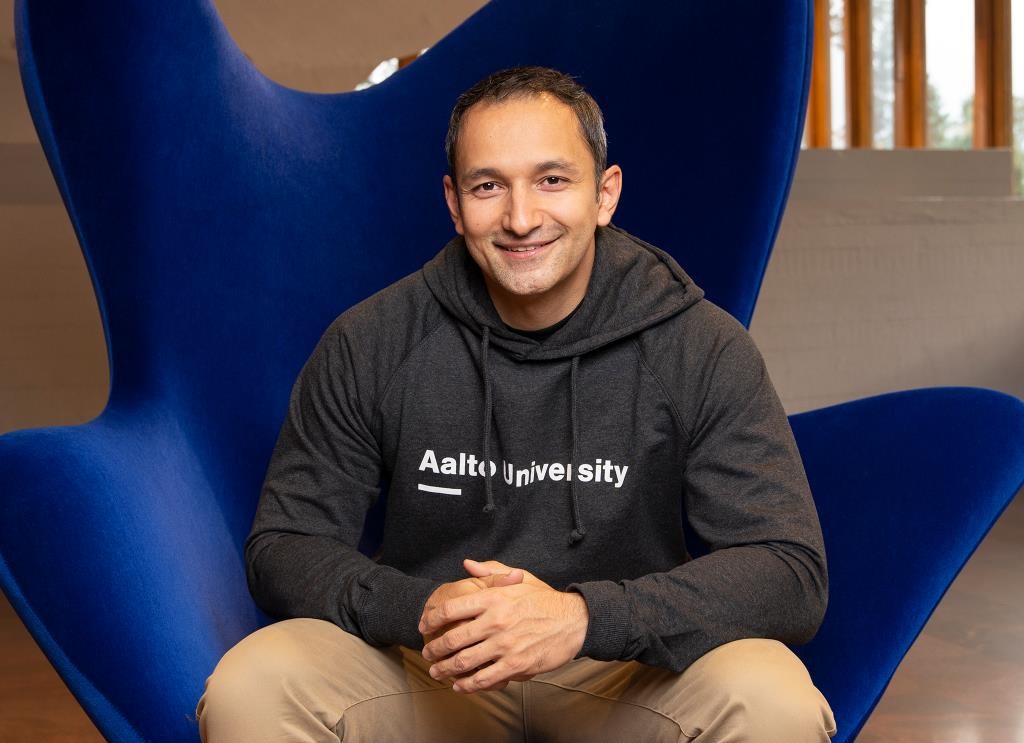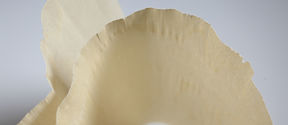What are doctoral studies like?
As a doctoral student, you are part of an international academic community. The doctoral research and studies develop you into an expert of your research topic and build your professional capacity.

Senni Heimala is passionate about doing work that has significance and impact. In her doctoral research at the Bioinnovation Center, she is at the core of her dreams with the Bio-Dyes project, that is aimed at developing bio-based dyes for the textile industry. In this project, Aalto University and the Natural Resources Institute Finland (Luke) combine their strong expertise in areas of chemistry and textile design, as well as in biology and agriculture.
Interested in textiles, Heimala graduated as a Master of Science in Chemical Engineering in the spring of 2023. In her master's thesis, she focused on Ioncell fibers and their quality assessment.
"As a result of my master's thesis work, I became even more excited about textile research. The textile industry has enormous environmental impacts, and I want to influence the production to be more responsible and sustainable."
Heimala finds the current volume of textiles staggering, as well as the short lifespan of clothing. The rise of ultra-fast fashion, where garments may be worn only once, adds to the problem even more.
"In addition to poor quality, the reason is that styles are designed to age quickly to make room for new sales. This is incomprehensible. I hope we would value clothes more."
The ever-growing textile industry depends on synthetic dyes, which are mainly fossil-based and non-biodegradable. Wastewater from dyeing processes is often not treated at all, and its discharge into local water systems threatens human health, agriculture, and the entire ecosystem's well-being.
"Currently, the environmental impacts of textile production are outsourced to other countries when clothes are imported to Europe. I hope we could have more local ways to produce and dye textiles," says Heimala.
Valuable materials from needles, nettles, and berries
The goal of the Bio-Dyes project is to find safe alternatives to synthetic textile dyes from the side streams of Finnish agriculture, forestry, and the food industry.
"The expertise of Luke and Aalto complement each other seamlessly in the project. Together with Luke's network of partners, we cover the entire value chain of textile dyes, from the cultivation, procurement, and processing of natural products to the final textile application. We are excited about this joint project and convinced that it benefits all parties," says Michael Hummel, director of the Bioinnovation Center.
The research focuses particularly on dark dyes, which are rare in nature. The production of synthetic dark dyes requires more dyes, chemicals, and auxiliaries than other colors, which increases the environmental burden of production. Some dark synthetic textile dyes are also highly sensitizing to the skin and harmful to aquatic organisms.
The project starts with the needles and bark of spruce, which Luke already has solid experience and expertise in processing.
"Valuable materials for the dyeing process can be found in the side streams of the forestry industry. The pulp pressed from berries during juice production is also a good candidate, as are various agricultural and natural product plant side streams. The goal is to use various extraction and separation techniques to fully utilize the biomass from production side streams," says researcher at Luke Susan Kunnas.
People are increasingly sensitive to synthetic dyes in clothing due to concerns about skin irritation and allergic reactions. This has increased interest towards natural dyes in general. Some natural dyes found in plants and bioproducts can also be antibacterial, adding value to their use in textiles. However, many natural dyes have the problem of poor fastness, which leads to fading during washing or exposure to sunlight, for example.
"We are studying the adhesion of alternative bio-based dyes and auxiliaries to textiles to optimize and improve their fastness properties. We have equipment for standardized tests of wash, light, and abrasion resistance for textiles," says Professor Ali Tehrani from Aalto University, who leads the Bio-Dyes project and supervises Heimala's doctoral research.
Towards change and the realization of a dream
Tehrani notes that natural dyes were used for textile dyeing thousands of years ago. However, synthetic dyes have dominated the market for over a century, and today, the share of natural dyes in the textile industry is extremely small. He believes that bio-dyes have a place in the market, especially if clothing brands embrace the change.
"In addition to the substances used in dyeing and finishing textiles, we are also focusing on the binders used in fabric printing. The aim is to find renewable, biodegradable, and safe alternatives to synthetic substances," Tehrani states.
After laboratory tests, the project aims to scale up the production of bio-dyes using Luke's pilot equipment and move a step towards industrial implementation. At the same time, there is close cooperation with farmers, forestry, and natural product companies to commercialize the products.
"In the final phase of my doctoral research, I will investigate consumer and market interest in textiles dyed with bio-dyes. We will also evaluate the environmental impacts and techno-economic feasibility of dye production and the dyeing process. My big dream is that this project will lead to the start of production that brings sustainable and safe dyes to the textile market," says Heimala.
Text: Marjukka Puolakka


As a doctoral student, you are part of an international academic community. The doctoral research and studies develop you into an expert of your research topic and build your professional capacity.

Find out what is required of applicants and what can our doctoral studies offer!

To achieve human wellbeing in planetary boundaries, we need new sustainable solutions to wisely use our natural resources. The Bioinnovation Center especially focuses on innovations in sustainable bio-based materials, with special focus on textiles and packaging.



